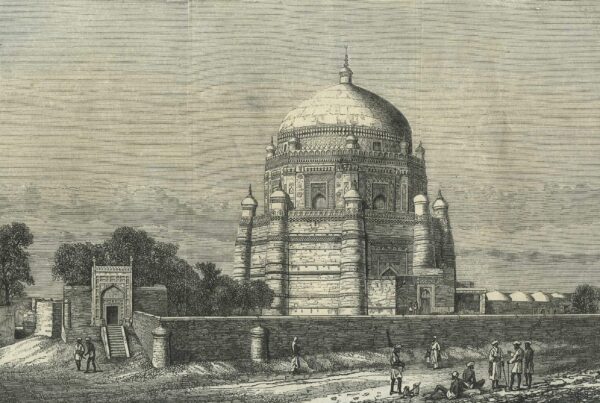In 1975, French and Pakistani archaeologists working in Pakistan’s balochistan province made a discovery of colossal proportions: one of the earliest cities of South Asia.
Hidden beneath the dusty fields of the Kachi plains lay a 9000 year old settlement hidden from where civilization in our part of the world began.
Of the Neolithic Mehrgarh settlement.
Known famously as the Mehrgarh settlement, it was one of the earliest Neolithic settlements ever discovered in South Asia. The difference of the Palaeolithic and Neolithic eras in prehistory are based on a multitude of factors but in layman terms it represents the shift amongst the early humans from a Hunter Gatherer lifestyle to a settled lifestyle initiating 3 differences of grand significance: settling down in one area, taming of animals, and cultivation of food; The triumvirate which sustained civilization.
In South Asia one of the earliest example of this shift took place in the Kachi plains near the bolan pass of Balochistan. Many theories of how it transpired exist with many scholars believing that a Neolithic migration from the west led to the mixing of these new settlers with locals and initiated the beginning of settled life in Mehrgarh.
The excavations at Mehrgarh lasted years and yielded thousands of artefacts and unearthed what was one of the earliest and one of the best planned cities of south Asian history which certain scholars hypothesized to have housed more than 20,000 people in its prime. The people of Mehrgarh lived in multi storied mud houses with cities containing granaries to store yield. The mainly grew barley with a few exceptions of other plants and herded goats and sheep. Apart from early agriculture, example of beadwork, figurines, and excellent pottery were also discovered from the remains.
The excavations in Mehrgarh transcended various levels each from a different era however most scholars view the first 6 to be the most significant. The first layer was from an aceramic era with a lack of pottery but the latter 6 from the ceramic produced some of the most excellent examples of the most intricate pottery.
Another discovery of great significance was the prevalence of ‘Proto-Dentistry’ in the remains of its inhabitants. Many people had holes drilled in their teeth. Upon research it was found that these holes were neither aesthetic nor religious but related to health issues! Flint tools had been employed to drill these holes which were most probably related to some widespread health issue.
Some of the oldest seeds of tree wool were also discovered in its remains. Cotton cultivation from the Indus Valley would be procured centuries later by the Assyrian king Sennacherib and introduced in his capital of Nineveh in modern Iraq. It would spread further from there.
The city flourished for thousands of years before eventually around the middle of the 3rd millennium BCE when it’s inhabitants started moving outwards towards the rising Indus Valley Civilization. It slept for many millennia before eventually being discovered in 1975.

Ancient History
The 9000 year old Mehrgarh Settlement
About Me
Peshawar, Khyber Pakhtunkhwa
Pakistan
25000
Email: mhuzaifanizam0118@gmail.com



